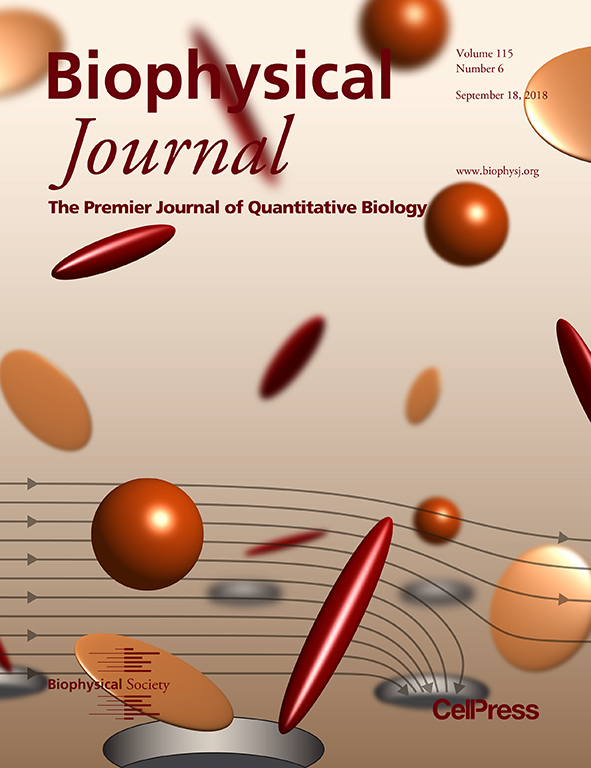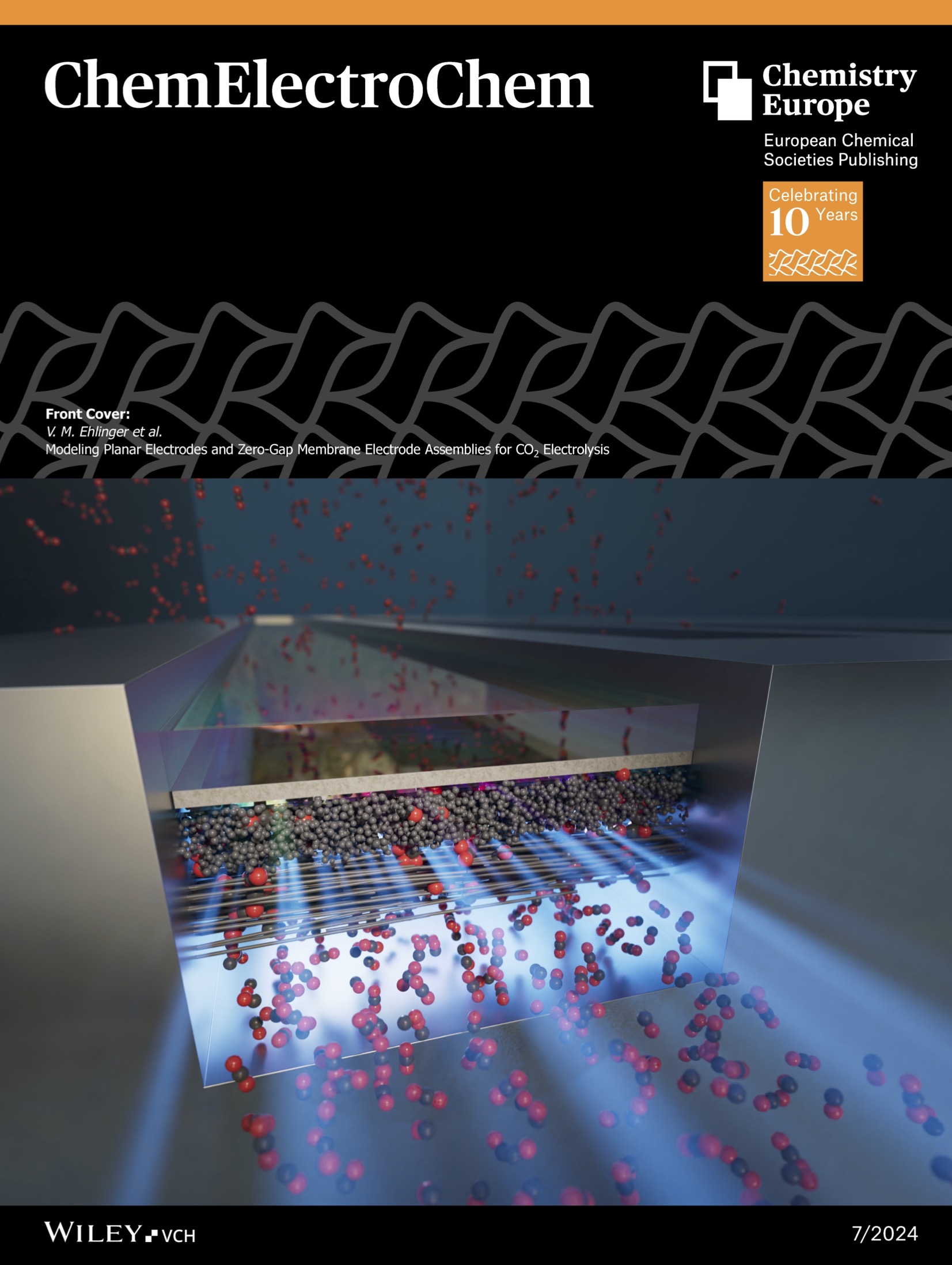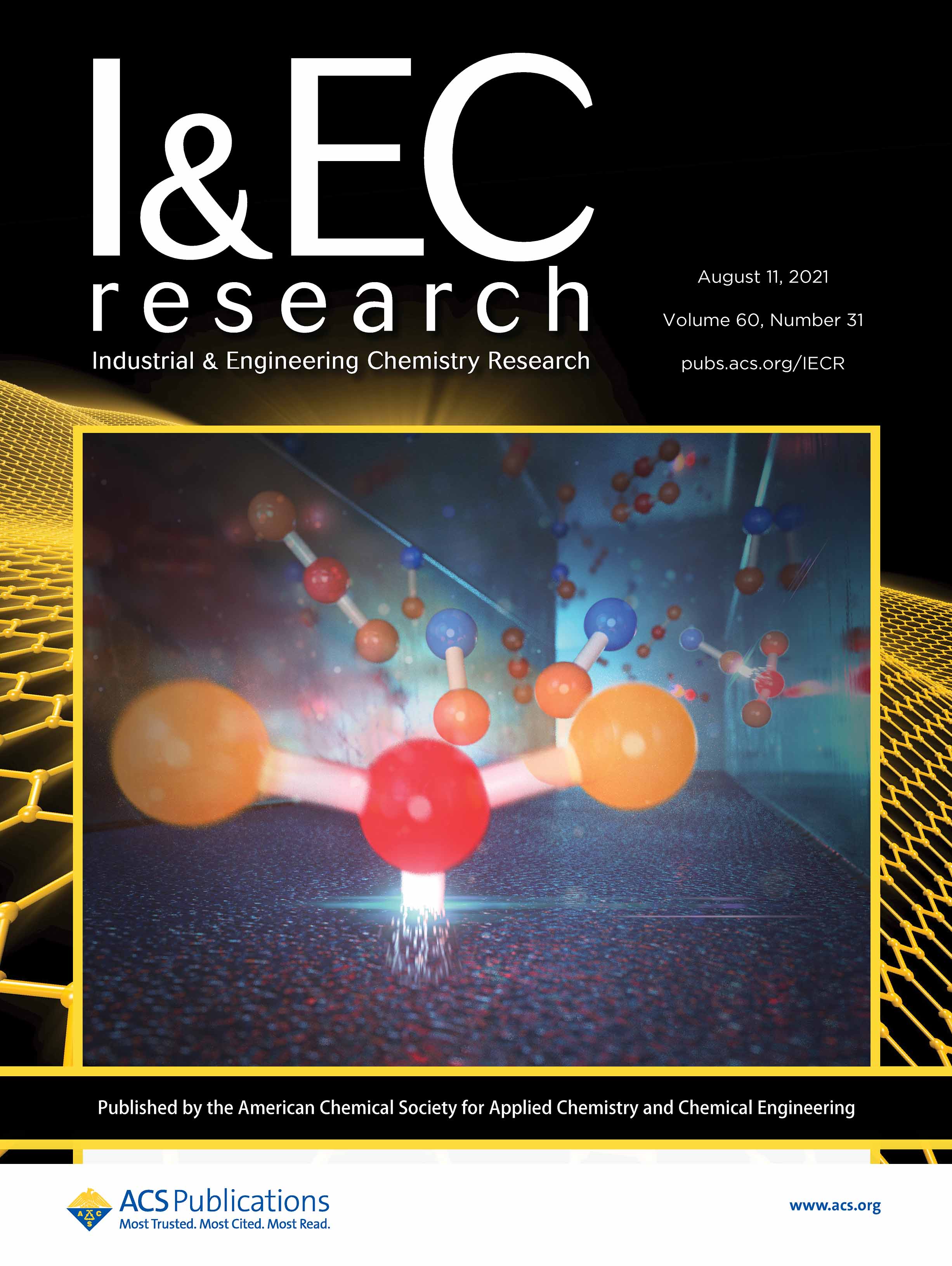Publications
Journal papers
- Optimized tandem catalyst patterning for CO2 reduction flow reactors
J. Guo, T. Roy, N. Govindarajan, J.B. Varley, J. Raisin, J. Lee, J. Jang, D.U. Lee, T.F. Jaramillo, & T.Y. Lin
Submitted.
[arXiv]
- Bubble Transport through a Porous Lattice with an Applied Inlet Flow
J. Guo, K. Seung, S. Kang, T.Y. Lin, & J.T. Davis
Journal of the Electrochemical Society, 172(10), 100542, (2025).
- Topology Optimization of Curved Electrodes with Suggested Simplified Corrugated Designs
T.Y. Lin, H. Li, N.W. Brady, N.R. Cross, V.M. Ehlinger, T. Roy, M.A. Worsley, & G. Bucci
ACS Electrochemistry, (2025).
- Modeling Electrodeposition in 3D Porous Architectures for Solid-State Li-Metal Batteries
S.T.W. Sarnecki, S.P. Mish, N.W. Brady, N.R. Cross, V.M. Ehlinger, H. Li, T. Roy, C. Orme, M.A. Worsley, T.Y. Lin, & G. Bucci
Journal of The Electrochemical Society, 172(9), 090504, (2025).
- Optimization of direct air capture processes using reactive transport models of adsorption-desorption cycles
H.A. Pedrozo, M.G. Gonzalez-Ramirez, T.Y. Lin, T. Moore, T. Roy, D.T. Nguyen, P. Roy, S. Baker, L.T. Biegler, & G. Panagakos
Computers & Chemical Engineering, 204, 109379, (2025).
- Accelerating climate technologies through the science of scale-up
T. Moore*, A.A. Wong*, B. Giera, D.I. Oyarzun, A.E. Gongora, T.Y. Lin, W. Li, T. Owens, D. Nguyen, V.M. Ehlinger, A. Prajapati, S.W. Chung, P. Roy, J. DeOtte, N.R. Cross, A. Aui, Y. Choi, M. Goldman, H.-Y. Jeong, C. Ye, A. Sarkar, E.B. Duoss, C. Hahn, & S.E. Baker
Nature Chemical Engineering, 1, 731–740, (2024).
*Equal contribution
[SharedIt] (no paywall) [LLNL news]
- Operando Surface-Enhanced Infrared Spectroscopy Connects Interfacial Dynamics with Reaction Kinetics During Electrochemical CO2 Reduction on Copper
J.E. Matthews, J.E.A. Acosta, S.-W. Lee, D. Oh, T.Y. Lin, K.M.K. Yap, J. Chen, J.-W. Jang, D.U. Lee, A.C. Nielander, & T.F. Jaramillo
ACS Catalysis, 15(1), 381–391, (2024).
- Viability of Additively Manufactured Electrodes for Lithium-ion Batteries
N.R. Cross*, H. Li*, T. Roy*, V.M. Ehlinger, T.Y. Lin, N.W. Brady, S. Chandrasekaran, M.A. Worsley, & G. Bucci
ACS Applied Engineering Materials, (2024).
*Equal contribution
- Topology Optimization for the Full-Cell Design of Porous Electrodes in Electrochemical Energy Storage Devices
H. Li, G. Bucci, N.W. Brady, N.R. Cross, V.M. Ehlinger, T.Y. Lin, M. Salazar de Troya, D. Tortorelli, M.A. Worsley, & T. Roy
Structural and Multidisciplinary Optimization, 67, 188, (2024).
[arXiv]
- Nanobubble Formation and Coverage during High Current Density Alkaline Water Electrolysis
J.A. Hammons, S.Y. Kang, T.J. Ferron, F. Aydin, T.Y. Lin, K. Seung, P. Chow, Y. Xiao, & J.T. Davis
Nano Letters, 24(43), 13695-13701, (2024).
[LLNL news]
- Shape matters: Understanding the effect of electrode geometry on cell resistance and chemo-mechanical stress
T.Y. Lin, H. Li, N.W. Brady, N.R. Cross, V.M. Ehlinger, T. Roy, D. Tortorelli, C. Orme, M.A. Worsley, & G. Bucci
Journal of The Electrochemical Society, 171(10), 100515, (2024)
[arXiv]
- 3D printed optimized electrodes for electrochemical flow reactors
J.T. Davis, B.S. Jayathilake, S. Chandrasekaran, J.J. Wong, J.R. Deotte, S.E. Baker, V.A. Beck, E.B. Duoss, M.A. Worsley, & T.Y. Lin
Scientific Reports, 14, 22662, (2024).
- EchemFEM: A Firedrake-based Python package for electrochemical transport
T. Roy, J. Andrej, A. Antimes, V.A. Beck, V. Ehlinger, F. Euzenat, N. Govindarajan, J. Guo, T.Y. Lin, & T. Moore
Journal of Open Source Software, 9(97), 6531, (2024).
- Train Small, Model Big: Scalable Physics Simulators via Reduced Order Modeling and Domain Decomposition
S.W. Chung, Y. Choi, P. Roy, T. Moore, T. Roy, T.Y. Lin, D. Nguyen, C. Hahn, E.B. Duoss, & S.E. Baker
Computer Methods in Applied Mechanics and Engineering, 427, 117041, (2024).
[arXiv]
- Advancing carbon capture from bench to pilot scale using dynamic similitude
T.Y. Lin*, T. Moore*, D. Nguyen*, P. Roy, N.A. Dudukovic, K. Seung, M. Troksa, R.L. Walton, C. Hahn, E.B. Duoss, & S. Baker
Cell Reports Physical Science, 5, 102019, (2024)
*Equal contribution
- Modeling Planar Electrodes and Zero-Gap Membrane Electrode Assemblies for CO2 Electrolysis
V.M. Ehlinger, D.U. Lee, T.Y. Lin, E.B. Duoss, S.E. Baker, T.F. Jaramillo, & C. Hahn
ChemElectroChem, e202300566, (2024)
We present a 1D model of a zero-gap membrane electrode assembly (MEA) CO2 electrolyzer, which is validated against corresponding experimental studies. The effect of flooding is discussed, along with a sensitivity analysis of model properties.
- Controlling Mass Transport in Direct Carbon Dioxide Zero-Gap Electrolyzers via Cell Compression
D.U. Lee, B. Joensen, J. Jenny, V.M. Ehlinger, S.-W. Lee, K. Abiose, Y. Xu, A. Sarkar, T. Y. Lin, C. Hahn, & T.F. Jaramillo
ACS Sustainable Chem. Eng., 11(46), 16661-16668, (2023)
Controlling mass transport is key to understanding the performance of CO2 electrolyzers. We show experimentally how mechanical compression affects the thickness and porosity of gas diffusion electrodes, which subsequently affects overall electrolyzer performance.
- Simplified Models of the Bicarbonate Buffer for Scaled Simulations of CO2 Electrolyzers
T. Moore*, T.Y. Lin*, T. Roy, S. Baker, E. Duoss, C. Hahn, & V.A. Beck
Industrial & Engineering Chemistry Research, 62(40), 16291-16301 (2023)
Bicarbonate electrolytes are common in CO2 electrolyzers, but these electrolytes are often difficult to simulate due to the wide range of reaction time scales present. We present a series of approximations that simplify the set of reactions.
*Equal contribution
- Coupling Microkinetics with Continuum Transport Models to Understand Electrochemical CO2 Reduction in Flow Reactors
N. Govindarajan*, T.Y. Lin*, T. Roy*, C. Hahn, & J.B. Varley
PRX Energy, 2, 033010, (2023)
We present a multiscale model that couples a 2D continuum transport model with ab initio microkinetic simulations that capture electrochemical CO2 reduction on Au electrodes. We study a flow reactor configuration and discuss two ways to increase CO2 availability: increasing flow and introducing an inert defect in the electrode.
*Equal contribution
[ChemRxiv]
- Electrolyzer energy dominates separation costs in state-of-the-art CO2 electrolyzers: Implications for single-pass CO2 utilization
T. Moore, D.I. Oyarzun, W. Li, T.Y. Lin, M. Goldman, A.A. Wong, S.A. Jaffer, A. Sarkar, S.E. Baker, E.B. Duoss, & C. Hahn
Joule, 7(4), 782-796, (2023)
Using a techno-economic analysis, we assess the trade-offs between downstream gas separation and maximizing CO2 electrolyzer performance. We find that the optimal single-pass conversion for ethylene production is relatively low (5-10%).
[2024 LLNL Publication Award]
- Topology optimization of 3D flow fields for flow batteries
T.Y. Lin, S.E. Baker, E.B. Duoss, & V.A. Beck
Journal of The Electrochemical Society, 169(5), 050540, (2022)
In a flow battery, a ‘‘flow field’’, i.e. a flow manifold, is used to distribute reactants to the porous electrode. We use topology optimization to design the flow field in order to minimize the sum of the electrical and flow power losses. We demonstrate how our optimized designs improve upon the popular interdigitated flow field design.
[2023 LLNL Publication Award][arXiv]
- Vapor-fed electrolyzers for carbon dioxide reduction using tandem electrocatalysts: cuprous oxide coupled with nickel-coordinated nitrogen-doped carbon
Y.-R. Lin*, D.U. Lee*, S. Tan, D.M. Koshy, T.Y. Lin, L. Wang, D. Corral, J.E.A. Acosta, J.A.Z. Zeledon, V.A. Beck, S.E. Baker, E.B. Duoss, C. Hahn, & T.F. Jaramillo
Advanced Functional Materials, 2113252, (2022)
An experimental study of a tandem electrocatalyst for CO2 reduction. This catalyst is integrated into a gas diffusion electrode and directly converts vapor-fed CO2 to CO, and then CO to ethylene, all in one step. Our results are supported by continuum simulations of the mass transfer process.
- Analysis of the reactive CO2 surface flux in electrocatalytic aqueous flow reactors
T.Y. Lin, S.E. Baker, E.B. Duoss, & V.A. Beck
Industrial & Engineering Chemistry Research, 60(31), 11824–11833, (2021)
A theoretical and numerical study of electrochemical CO2 reduction in aqueous flow reactors. When the CO2 reduction reaction occurs on a cathode surface, hydroxide molecules are generated along with the desired product. These hydroxide molecules can react away CO2 in the bulk liquid, thus inhibiting mass transfer of CO2 to the cathode surface. We show how the surface flux of CO2 depends on the flow rate and the surface and bulk reaction rates.
- Extravasation of PEGylated spherical nanoparticles through a circular pore of similar size
T.Y. Lin, S.H. Klass, M.B. Francis, & E.S.G. Shaqfeh
Macromolecules, 53(8), 2991-3006, (2020)
A computational, theoretical, and experimental study of the extravasation of PEGylated nanoparticles through pores of the tumor vasculature. Poly(ethylene glycol) (PEG) polymers are commonly used to shield drug delivery nanoparticles from the body's immune system. We find that extravasation rates are reduced as the PEG molecular weight or the PEG tethering density is increased.
- Taylor dispersion in the presence of cross flow and interfacial mass transfer
T.Y. Lin & E.S.G. Shaqfeh
Physical Review Fluids, 4, 034501, (2019)
A theoretical and computational study of the streamwise dispersion of a solute in a pressure-driven channel flow in the presence of cross flow and mass transfer at the wall. We determine the effective velocity, Taylor dispersion coefficient, and mass transfer rate of the cross-sectionally averaged solute concentration and perform an asymptotic analysis for the case of strong cross flow. Additionally, we demonstrate how our theory can be applied to spatially nonuniform cross flows; in particular, we explore how the lateral migration of particles in viscoelastic flow affects dispersion.
- Extravasation of Brownian spheroidal nanoparticles through vascular pores
P.N. Shah*, T.Y. Lin*, I.L. Aanei, S.H. Klass, B.R. Smith, & E.S.G. Shaqfeh
Biophysical Journal, 11(6), 1103-1115, (2018)
A computational, theoretical, and experimental study of the extravasation of nanoparticles through pores of the tumor vasculature. As a cancerous tumor grows, small pores develop in the nearby blood vessels which provide a pathway for drug delivery nanoparticles. We find that the extravasation rate of the nanoparticles is dependent on both the shape and size of the nanoparticle and the fluid flows present. Experiments were done in collaboration with the Francis Lab at UC Berkeley.
*Equal contribution.
-

On the cover of the Sept. 18, 2018 issue of Biophysical Journal.
Cover art drawn by Tiras.
[Biophysical Society Blog] [Stanford Engineering Magazine]
- Effect of length on the dynamics of wall tethered polymers in shear flow
T.Y. Lin*, A. Saadat*, A. Kushwaha, & E.S.G. Shaqfeh
Macromolecules, 51(1), 254-265, (2018)
A computational study of the dynamics of a wall tethered polymer in shear flow. We develop scalings based on the polymer contour length and flow strength for the fractional extension and the collision rate with the wall, which are confirmed by Brownian dynamics simulations. We also discuss the effect of hydrodynamic interactions with the wall. Simulations are performed with BDpack, an open source Brownian dynamics software package.
*Equal contribution.
- Heat/mass transport in shear flow over a reactive surface with inert defects
P.N. Shah, T.Y. Lin, & E.S.G. Shaqfeh
Journal of Fluid Mechanics, 811, 372-399, (2017)
A theoretical and computational study of the mass (or heat) transfer in a shear flow to a reactive surface with small inert defects.
- Buoyancy-induced turbulent mixing in a narrow tilted tank
T.Y. Lin, C.P. Caulfield, & A.W. Woods
Journal of Fluid Mechanics, 773, 267-297, (2015)
An experimental and analytical investigation of the buoyancy-induced turbulent mixing in a narrow tank tilted at an angle from the vertical. Salty dyed water is introduced at the top of the tank, and the evolution of the density field is visualized using a light-attenuation image analysis method. A counterflow develops and we find that this enhances the effective turbulent diffusivity through a process analogous to Taylor dispersion.
- Review and analysis of performance metrics of droplet microfluidics systems
L. Rosenfeld, T.Y. Lin, R. Derda, & S.K.Y. Tang
Microfluidics and Nanofluidics, 16(5), 921-939, (2014)
An invited review paper discussing the various parameters involved in a droplet microfluidics system.
- The significance of moment-of-inertia variation in flight manoeuvres of butterflies
T.Y. Lin, L. Zheng, T. Hedrick, & R. Mittal
Bioinspiration & Biomimetics, 7(4), 044002, (2012)
An experimental paper discussing the role that changes in body moment of inertia might play during flight maneuvers of insects. High-speed, high-resolution videogrammetry is used to quantify the trajectory and body conformation of Painted Lady butterflies during flight maneuvers.
[video]
Theses
- Brownian dynamics simulation of nanoparticles and polymers with applications in drug delivery
PhD Thesis, Stanford University (2020)
- Buoyancy-induced turbulent mixing in a narrow tilted tank
MPhil Thesis, University of Cambridge, Churchill College (2014)

